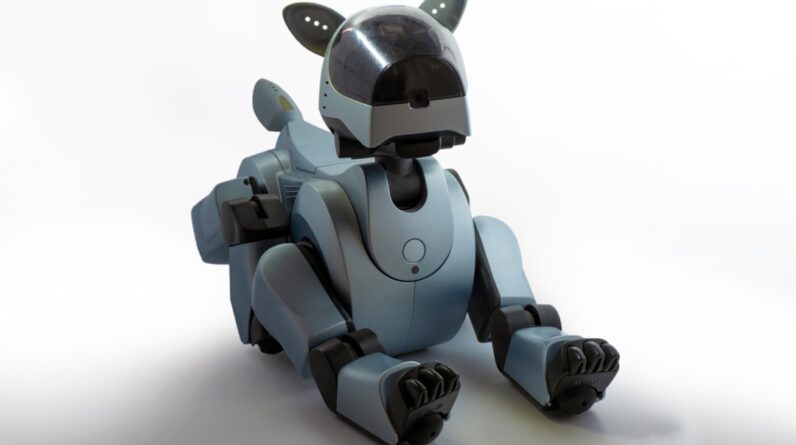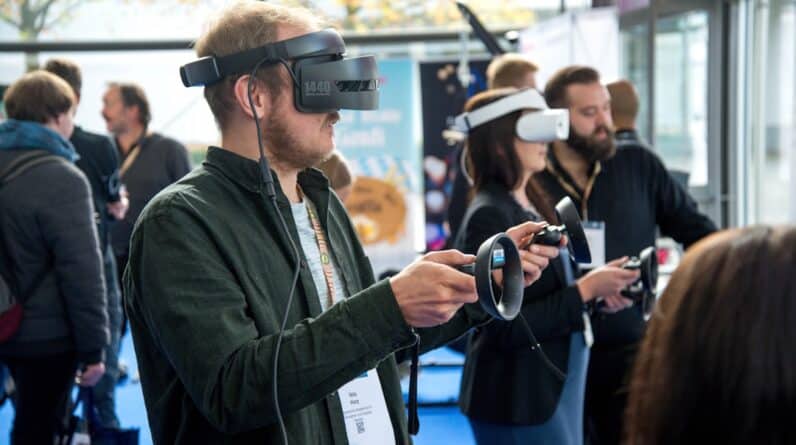As you navigate through the modern workforce, you cannot help but notice the rapid rise of artificial intelligence (AI) and its profound implications for the job market. Over the past few years, AI has transitioned from a futuristic concept to a tangible reality, influencing various sectors and reshaping how work is performed. From automated customer service chatbots to sophisticated algorithms that analyze vast amounts of data, AI is becoming an integral part of everyday business operations.
This transformation raises critical questions about the future of employment: Will AI create new job opportunities, or will it render many positions obsolete? As you delve deeper into this topic, you will uncover the complexities surrounding AI’s impact on employment, revealing both its potential benefits and risks. The conversation surrounding AI and employment is multifaceted, with passionate advocates on both sides of the debate.
On one hand, proponents argue that AI can serve as a catalyst for job creation, driving innovation and efficiency across industries. On the other hand, critics warn of the potential for widespread job displacement as machines take over tasks traditionally performed by humans. As you explore these contrasting viewpoints, it becomes clear that understanding the implications of AI on the job market is essential for individuals, businesses, and policymakers alike.
The challenge lies in finding a balance between harnessing the benefits of AI while mitigating its adverse effects on employment.
Key Takeaways
- The rise of artificial intelligence is reshaping the job market, leading to both opportunities and challenges for workers.
- AI technology has the potential to create new job opportunities in emerging industries and fields such as data science, machine learning, and robotics.
- However, AI also has the capacity to replace human workers in certain tasks and industries, leading to concerns about job displacement and unemployment.
- Case studies in industries such as manufacturing, customer service, and healthcare demonstrate both the creation and destruction of jobs due to AI technology.
- Ethical considerations surrounding AI’s impact on employment include issues of job quality, income inequality, and the need for retraining and upskilling.
The argument for AI as a job creator: How AI technology can create new job opportunities
When you consider the potential of AI to create jobs, it is essential to recognize that technological advancements have historically led to new industries and roles. As AI continues to evolve, it opens up avenues for innovation that can lead to the emergence of entirely new job categories. For instance, as businesses adopt AI technologies, there is an increasing demand for skilled professionals who can develop, implement, and maintain these systems.
Roles such as AI ethicists, data scientists, and machine learning engineers are becoming more prevalent, reflecting the need for expertise in navigating this new landscape. Moreover, AI can enhance productivity and efficiency in existing roles, allowing employees to focus on higher-level tasks that require creativity and critical thinking. By automating repetitive and mundane tasks, AI frees up human workers to engage in more meaningful work that adds value to their organizations.
For example, in the healthcare sector, AI can assist doctors by analyzing patient data and providing diagnostic suggestions, enabling healthcare professionals to spend more time on patient care rather than administrative duties. This shift not only improves job satisfaction but also leads to better outcomes for patients.
The argument for AI as a job destroyer: How AI technology can replace human workers
Conversely, as you examine the darker side of AI’s impact on employment, it becomes evident that the technology poses a significant threat to many traditional jobs. Automation has already begun to replace roles in various sectors, particularly those involving routine tasks that can be easily replicated by machines. For instance, manufacturing jobs have been increasingly automated through robotics and AI systems, leading to significant job losses in this sector.
As companies seek to reduce costs and improve efficiency, they may opt for machines over human labor, resulting in a shrinking workforce. The retail industry also exemplifies this trend, with self-checkout kiosks and online shopping platforms reducing the need for cashiers and sales associates. As you observe these changes, it is crucial to recognize that while some jobs may be lost due to automation, others may evolve or transform rather than disappear entirely.
However, the challenge lies in ensuring that displaced workers have access to resources and support to transition into new roles in an increasingly automated world.
Case studies: Examples of industries and companies where AI has created or destroyed jobs
To better understand the impact of AI on employment, you can look at specific case studies from various industries. In the automotive sector, companies like Tesla have embraced AI-driven technologies to enhance manufacturing processes and improve vehicle safety features. While this has led to increased efficiency and innovation within the industry, it has also resulted in job losses among traditional assembly line workers as automation takes over repetitive tasks.
This duality highlights the need for workers to adapt to new technologies while also recognizing the potential for new roles in areas such as software development and data analysis. In contrast, the healthcare industry presents a more optimistic view of AI’s potential to create jobs. Companies like IBM Watson Health are leveraging AI to assist healthcare professionals in diagnosing diseases and personalizing treatment plans.
This technology not only enhances patient care but also creates demand for skilled workers who can interpret AI-generated insights and integrate them into clinical practice. As you analyze these case studies, it becomes clear that the impact of AI on employment is not uniform; rather, it varies significantly across different sectors and companies.
The ethical implications: Considering the social and ethical consequences of AI’s impact on employment
As you delve into the ethical implications of AI’s impact on employment, it is essential to consider the broader social consequences of widespread automation. The potential for job displacement raises questions about economic inequality and access to opportunities. If certain segments of the population are disproportionately affected by job losses due to automation, it could exacerbate existing disparities and create a divide between those who can adapt to new technologies and those who cannot.
Furthermore, there are ethical concerns surrounding the decision-making processes of AI systems. As machines take on more responsibilities traditionally held by humans, issues related to accountability and transparency arise. For instance, if an AI system makes a mistake that leads to harm or loss of employment, who is responsible?
These questions highlight the need for ethical frameworks that guide the development and implementation of AI technologies in a way that prioritizes human welfare and social equity.
The role of education and training: How individuals and societies can prepare for the changing job market
Developing Technical Skills for a Competitive Edge
Lifelong learning initiatives that focus on developing technical skills, such as coding, data analysis, and digital literacy, will be crucial in ensuring that workers remain competitive in their fields.
Evolving Education for a Technology-Driven Economy
Educational institutions must evolve their curricula to reflect the demands of a technology-driven economy. By incorporating interdisciplinary approaches that blend technical skills with critical thinking and creativity, schools can better equip students for success in a rapidly changing landscape.
Fostering a Culture of Continuous Learning
As we reflect on these educational strategies, it is evident that fostering a culture of continuous learning will be vital for individuals and societies alike as they adapt to the challenges posed by AI.
Government policies and regulations: The role of government in managing the impact of AI on employment
As you consider the role of government in managing the impact of AI on employment, it becomes clear that proactive policies are necessary to address potential challenges associated with automation. Governments must take an active role in shaping regulations that promote responsible AI development while also protecting workers’ rights. This includes implementing measures such as retraining programs for displaced workers and incentivizing businesses to invest in human capital alongside technological advancements.
Additionally, governments should engage in dialogue with stakeholders—including businesses, labor organizations, and educational institutions—to develop comprehensive strategies that address the multifaceted implications of AI on employment. By fostering collaboration among these groups, policymakers can create an environment that encourages innovation while also safeguarding workers’ interests. As you contemplate these initiatives, it is evident that effective governance will be crucial in navigating the complexities of an AI-driven job market.
Finding a balance between the potential benefits and risks of AI technology in the job market
In conclusion, as you reflect on the rise of artificial intelligence and its impact on the job market, it becomes clear that finding a balance between its potential benefits and risks is essential for shaping a sustainable future. While AI has the capacity to create new job opportunities and enhance productivity across various sectors, it also poses significant challenges related to job displacement and ethical considerations. By fostering a culture of continuous learning and implementing proactive government policies, individuals and societies can better prepare for the evolving landscape of work.
Ultimately, navigating the complexities of AI’s impact on employment requires collaboration among all stakeholders—businesses, educators, policymakers, and workers themselves. By working together to harness the benefits of AI while addressing its challenges head-on, you can contribute to a future where technology serves as an ally rather than an adversary in the world of work. Embracing this collaborative approach will be key to ensuring that everyone has access to meaningful employment opportunities in an increasingly automated world.
In a related article titled Bridging the Gap: Human-AI Collaboration in Problem Solving, the discussion revolves around the potential for humans and AI to work together in solving complex problems. This article delves into the ways in which AI can complement human intelligence and enhance problem-solving capabilities. It highlights the importance of collaboration between humans and AI in order to achieve optimal results in various fields. This collaboration could potentially address the concerns raised in “The AI Paradox: Job Creators or Job Destroyers?” by showcasing the potential for AI to create new opportunities for job growth through collaboration with humans.
FAQs
What is the AI Paradox?
The AI Paradox refers to the debate over whether artificial intelligence (AI) will create more jobs or destroy existing jobs in the workforce.
How is AI expected to create jobs?
AI is expected to create jobs by driving innovation and creating new industries and opportunities. It can also automate repetitive tasks, allowing workers to focus on higher-value work.
How is AI expected to destroy jobs?
AI is expected to destroy jobs by automating tasks that are currently performed by humans, leading to potential job displacement in certain industries.
What are some examples of AI creating jobs?
Examples of AI creating jobs include the growth of AI-related industries such as data science, machine learning, and AI research, as well as the creation of new roles to manage and maintain AI systems.
What are some examples of AI destroying jobs?
Examples of AI destroying jobs include the automation of manufacturing and assembly line tasks, customer service roles, and administrative tasks through AI-powered systems.
What are the potential impacts of the AI Paradox on the workforce?
The potential impacts of the AI Paradox on the workforce include job displacement in certain industries, the creation of new job opportunities in AI-related fields, and the need for workers to adapt and acquire new skills to remain competitive in the job market.






